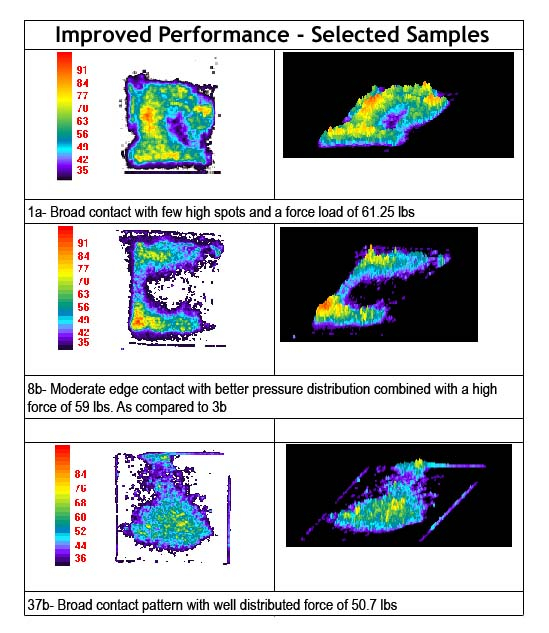Introduction
This Study was conducted as a demonstration of the combined effects contact and pressure on thermal compound performance as well as a trouble shooting guide. The samples here included those who had a good result in thermal performance and included those who saw little or no improvement in performance.
The test procedure was as follows:
- IC Diamond thermal grease was compared to PC users previously installed paste and after ICD application.
- All users recorded temperatures at ambient then at full CPU load on all tests.
- The test participants then removed their heat sinks and installed Fuji Pre-Scale a contact/pressure(C/P) sensitive film from Sensor Products without any grease.
- Heat sinks were remounted with contact and pressure film as they would do normally.
- Heat sinks were then removed and the contact film was sent to Sensor Products for digital analysis.
Results
Results show that careful attention to contact and pressure can yield significant benefits and that performance requires having both good contact and good pressure.The total span of temperatures in the sample group ranged from -5ºC to +3.9ºC, a non trivial 9ºC spread due to either contact or pressure.




All data samples

As a general observation From over 900 user test reviews of ICD it was found that 80% of the time that end-users that had experienced a favorable result had good C/P . Those that had less than a positive temperature reduction were low contact and/or low pressure. Tests Samples were conducted by users in four different forums.
Conclusion
The key to maximizing thermal paste performance is optimization of your contact and pressure, these two simple facts are 99% of what you need to know about optimizing thermal compound performance.
Many thanks to those that assisted us in this effort.
